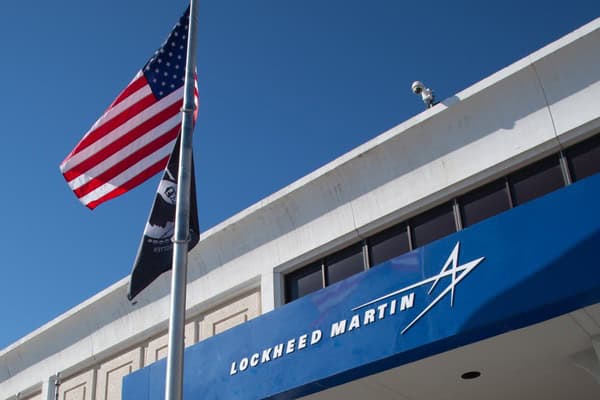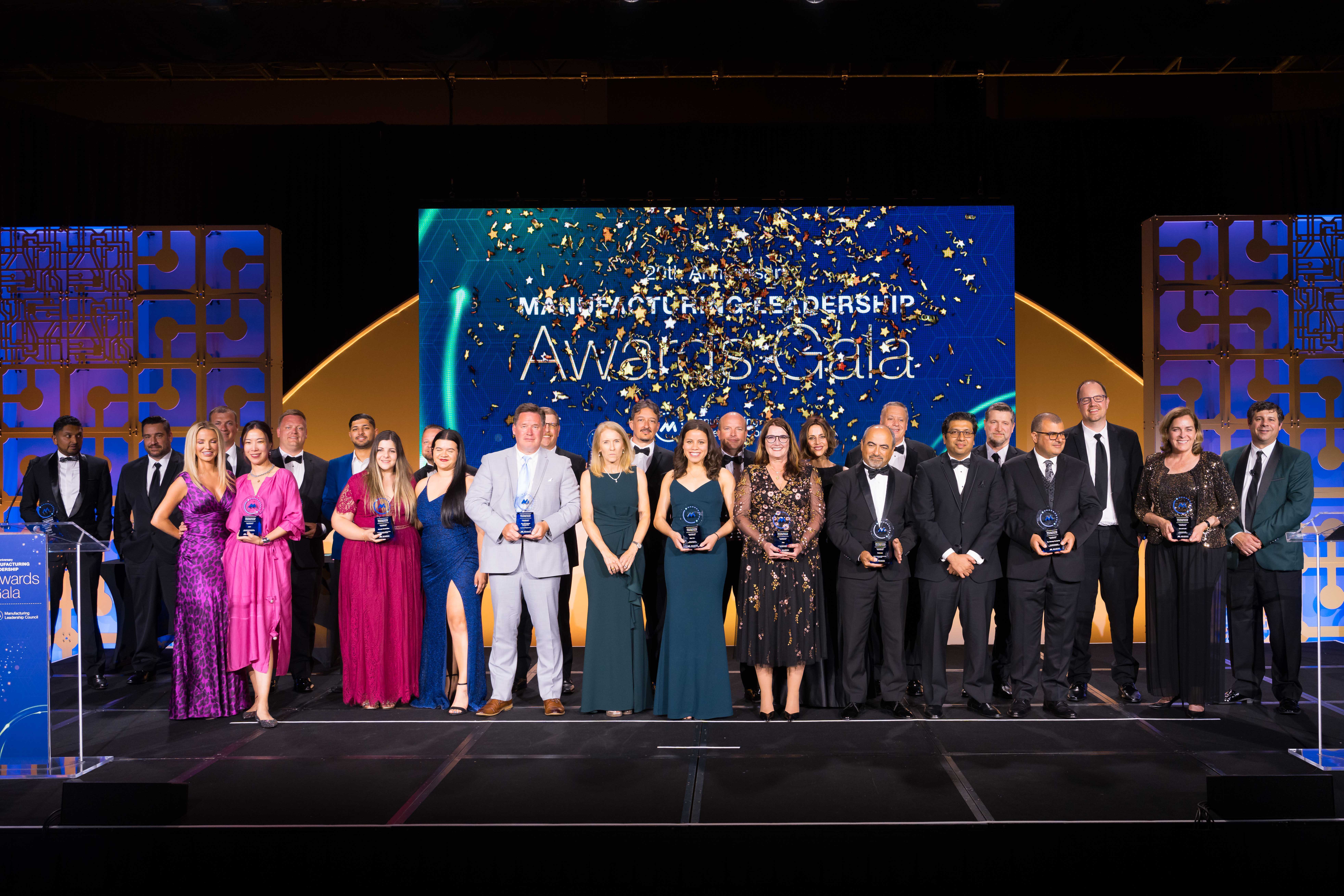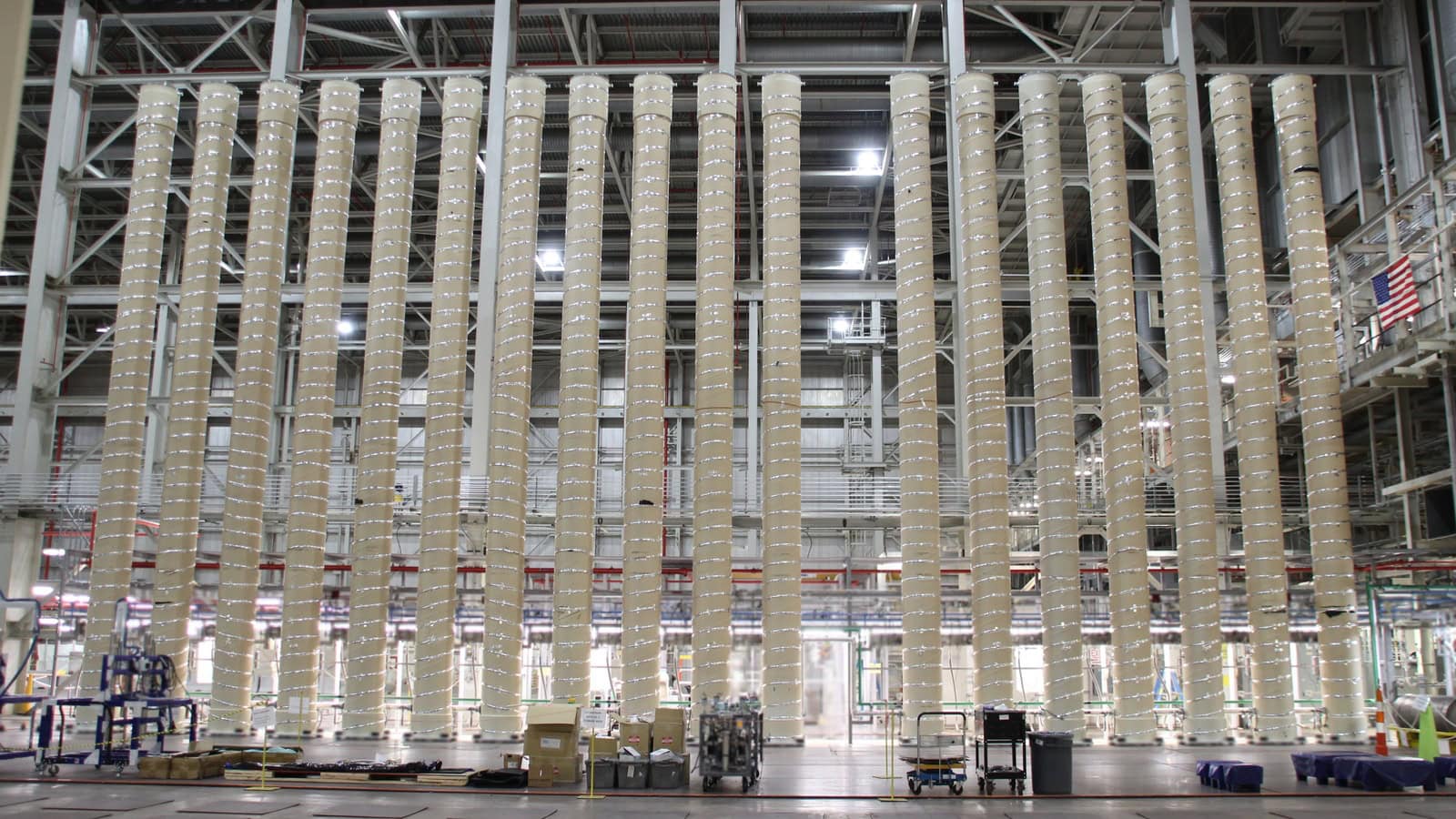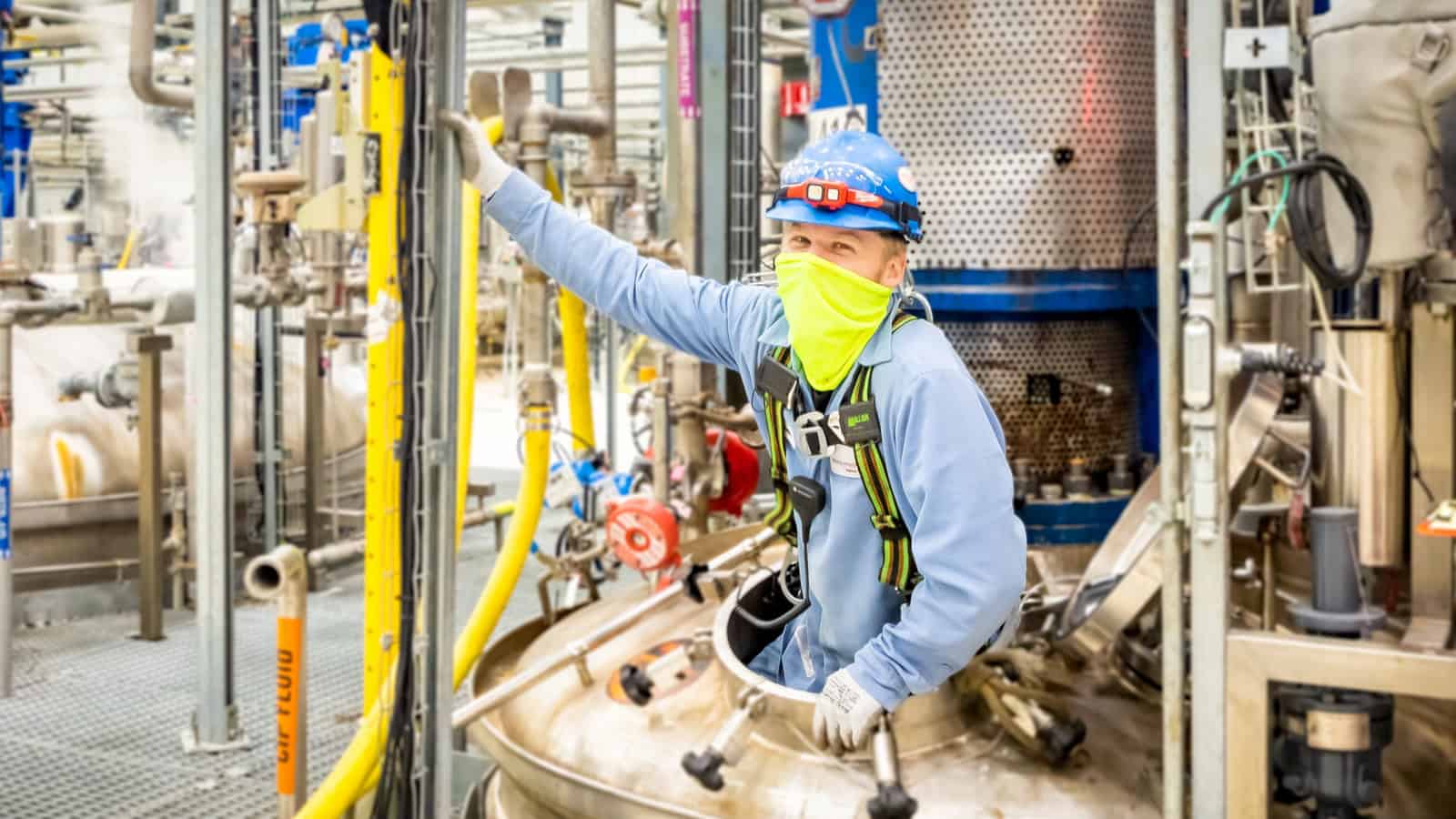NAM, Partners Urge Administration to Withdraw “March-in” Proposal

If finalized, guidance proposed last year by the Biden administration to allow the federal government to seize manufacturers’ intellectual property rights would be ruinous to the U.S. innovation economy, the NAM and state partners told Commerce Secretary Gina Raimondo this week.
What’s going on: In December, the Biden administration issued a proposal to enable government agencies to “march in” and revoke companies’ patent exclusivity if a product’s development was funded in any part by federal research dollars.
- Under the proposal, the government’s decision of whether to march in would be based on a product’s price—effectively imposing government-mandated price controls on innovative products like clean energy solutions, next-generation semiconductors and lifesaving medicines.
Manufacturers fight back: The NAM and a coalition of regional and state manufacturing associations are pushing back, highlighting the importance of ironclad IP rights to groundbreaking innovation.
- “[T]urning groundbreaking R&D into innovative products for the American people is only possible if creators—from university researchers to early-stage entrepreneurs to established businesses—can rely on strong intellectual property protections,” the associations told Raimondo.
Small business impacts: Startups and small businesses would pay the heaviest toll if the new march-in standards are finalized.
- Scientists and researchers at universities nationwide will face difficulties in partnering with the industry and in founding startups based on their research, “strik[ing] a blow to the local economies in [all 50] states that depend on university-centered innovation hubs for job creation and economic growth.”
- If a promising idea makes it out of the lab, outside investors will be reluctant to inject the capital necessary for further R&D and product development—resulting in fewer life-changing and lifesaving products for the American people.
What needs to happen: Manufacturers are calling on the Biden administration to reverse course.
- “We urge you to protect our local, state and regional economies, which benefit from breakthrough research, entrepreneurship and modern manufacturing, by withdrawing the proposed march-in guidance.”
10th Anniversary of NAM President and CEO’s “Four Pillars” Speech

NAM President and CEO Jay Timmons delivered a defining speech at the Friends of Adam Smith Awards a decade ago. This speech outlined the “Four Pillars of an Exceptional America,” a framework that continues to shape the NAM’s mission and advocacy.
Flashback: On June 11, 2014, in his speech accepting the 2014 Business Citizen Award for an outstanding record of achievement in advancing the principles of free enterprise, Timmons introduced the four pillars that underpin American exceptionalism and manufacturing strength.
The Four Pillars:
- Free enterprise: The economic system that unleashes innovation, creates opportunity and lifts humankind out of poverty more than any other economic system has in the history of the world.
- Competitiveness: Our ability, when untethered from government overreach, to prosper and win in a global economy.
- Individual liberty: The unique freedoms enshrined in our Constitution and Bill of Rights that enable us to live and succeed.
- Equal opportunity: Our shared belief that we all have the ability to contribute to the betterment of our families, our companies, our communities and our country.
Manufacturers’ approval: The NAM Board of Directors unanimously adopted these pillars as part of the association’s official policy positions, guiding the NAM’s Competing to Win agenda to bolster the competitiveness of manufacturers in the United States.
The impact: These pillars have guided the NAM’s efforts in promoting policies that support a robust manufacturing industry and a strong national economy, helping to draw support across the political divide for manufacturers’ principles-based agenda.
The bottom line: “The Four Pillars are not just about manufacturing; they are about sustaining the promise of America,” said NAM Executive Vice President Erin Streeter. “That’s why these values have helped us ensure the manufacturing agenda is a post-partisan agenda, drawing support for so many of our priorities from policymakers and by candidates—on both sides of the aisle—on the campaign trail. We will continue to work with anyone who wants to advance these values.”
Lockheed Martin to Aid in Missile Production

Lockheed Martin is helping strengthen the U.S. defense industrial base (Zacks.com).
What’s going on: The defense contractor’s Space Systems business unit recently finalized a modification contract deal to “provide systems engineering, test planning and long lead material to support missile production” to the U.S. Navy’s Strategic Systems Programs.
- The contract, valued at $99 million, is expected to be finished by Feb. 2, 2027.
Why it’s happening: “Nations are reinforcing their military capabilities to strengthen their defense structure in the growing threat environment.”
- Spending by countries on defense capabilities—including missiles—has picked up in recent years, following Russia’s invasion of Ukraine (Breaking Defense).
- “Lockheed’s weapon systems include precision strike weapons with long standoff ranges to keep pilots and aircraft out of harm’s way.”
Why it’s important: The growing number of global threats now confronting the U.S. and its allies mean we must be prepared, and manufacturers such as Lockheed Martin are a critical part of the equation.
Announcing the Winners of the 2024 Manufacturing Leadership Awards

The names are in! The Manufacturing Leadership Council—the NAM’s digital transformation division—is pleased to announce the winners of the 2024 Manufacturing Leadership Awards.
Now in its 20th year, the awards competition recognizes outstanding manufacturing companies and their leaders for groundbreaking use of advanced manufacturing technology.
“The class of 2024 should indeed be proud of their achievements in advancing the digital model of manufacturing,” said MLC Founder, Vice President and Executive Director David R. Brousell. “The awards reflect the truly incredible amount of innovation taking place in all sectors of the industry.”
Manufacturing Leader of the Year: Cooley Group President and CEO Daniel Dwight is the 2024 Manufacturing Leader of the Year.
- Dwight, who also serves on the MLC’s Board of Governors and is a member of the Executive Committee of the NAM Board of Directors, has overseen a significant turnaround in Cooley’s business performance through digital transformation, with a commitment to investing in smart factory technologies and developing a digital-ready workforce and business culture.
- In addition, the MLC named Cooley Group the 2024 Small/Medium Enterprise Manufacturer of the Year.
Large Enterprise Manufacturer of the Year: Intertape Polymer Group is the 2024 Large Enterprise Manufacturer of the Year.
- The award recognizes IPG’s achievements in digital transformation, including technology integration and workforce training.
- The company has also made noteworthy strides in sustainability through reductions in both energy usage and waste.
More honors: The MLC also announced winners in 11 project and individual categories, as well as the winners of the Manufacturing in 2030 Awards. The latter are given to projects with particularly forward-thinking innovations.
- The MLC honored all finalists and winners at the Manufacturing Leadership Awards Gala last night in Marco Island, Florida. A complete list of finalists and winners is available here.
Nominations for the 2025 season of the Manufacturing Leadership Awards will open on Sept. 16, 2024. More information is available here.
Centrus Aims to Make U.S. a Top Uranium Enricher

The most difficult part of creating nuclear power is enriching the uranium—and that’s precisely where Centrus Energy Corporation has set out to make America the global leader.
A unique position: The Bethesda, Maryland–headquartered Centrus, which is the only U.S.-owned enricher of uranium, can trace its roots as a company back to the Manhattan Project, the secret government initiative during World War II that brought the U.S. into the atomic age.
- The company is uniquely poised to make good on its aim to bring clean, plentiful, affordable and reliable energy to the world.
- “Nuclear power is reliable—so much so that we’ve seen a lot of the growth in nuclear generation around the world,” Centrus President and CEO Amir Vexler told the NAM.
- In 2023, global nuclear power generation grew 8%, after declining the prior year.
Geopolitical-fueled growth: The driver behind the expansion? Russia’s 2022 invasion of Ukraine, according to Vexler.
- “Since 2022, a lot of nations realized they have to have some level of sovereignty around power generation,” he said. “With nuclear, you’re not dependent on fossil fuels from other countries, which is particularly important if you’re a nation that’s not rich in resources.”
- In the more than two years since the start of the war in Ukraine, Russia has lost its position as the world’s top oil and gas exporter, as the U.S. and allies have sought to wean themselves off Russian energy imports.
A catch-22: But there’s no nuclear power without uranium—and ironically, Russia holds approximately 44% of the world’s uranium-enrichment capacity, according to the Department of Energy, and supplies nearly a quarter of the enriched uranium used in U.S. reactors.
- However, that monopoly may soon start to crumble, as in May President Biden signed bipartisan legislation to ban the import of Russian low-enriched uranium, also known as LEU.
Building up domestic supplies: At the same time, the U.S. is moving to ramp up domestic uranium production—and Centrus is key to making it happen.
- In November 2022, the DOE announced a $150 million cost-shared award with a Centrus subsidiary to demonstrate the capability to produce high-assay low-enriched uranium, or HALEU, an advanced fuel form needed to power the next generation of nuclear reactors.
Sole producer: HALEU is uranium enriched to between 5% and 20% uranium-235, and Centrus’ Piketon, Ohio, enrichment plant is the only American facility licensed to produce it.
- The Piketon facility began HALEU enrichment in late 2023, becoming the first U.S.-owned enrichment plant to start production in nearly 70 years. With sufficient public and private investment, Centrus could add thousands of centrifuges for the large-scale production of LEU for existing reactors and HALEU for future reactors. The plant could also provide enriched uranium for national security missions.
Filling a crucial vacuum: The removal of Russia from the uranium-enrichment landscape “creates a huge vacuum,” and it’s America’s to fill. In fact, doing so is a national security imperative, Vexler continued.
- “The enrichment process—creating the technology and building the machines—is so demanding, we as a country cannot cede it to others. Once that knowledge leaves our shores, we will never get it back. We have ceded [nuclear knowledge] to the Russians and Europeans before and it’s hard to catch up. … This is a complex supply chain that is extremely specialized, with an enormous amount of value add.”
- If the U.S. establishes robust uranium enrichment processes and facilities, he said, the country “could become a net exporter [of nuclear fuel] to Europe, Latin America [and] Asia. If we don’t compete in those markets, the Russians will.”
Safe, sound and lucrative: The cartoonish portrayal of the nuclear industry in popular culture has done it a disservice. It’s a fundamentally safe sector—and it can ensure well-paying jobs for years to come.
- “There is such great misinformation” about nuclear energy, Vexler said. “One of our biggest enemies is probably animated shows with catastrophic images [of nuclear plants]. … Consider that a U.S. company is enriching uranium here and will create a generation of people that will know about how to do it—technicians, electricians and more who understand these complex machines.”
- The nuclear sector is assiduously regulated and held to high standards, and it’s always learning, evolving and coming up with new reactor designs. “It’s probably one of the safest industries in the world.”
The last word: Vexler is optimistic about the future—both for Centrus as a company and for the U.S. as a major nuclear-power exporter.
- “I commend the U.S. government; there are many in it who are strong champions of nuclear power,” Vexler told us. “Getting the amount of funding that’s been allocated is a great accomplishment. With the continued support of the government and a public–private partnership, we will bring enrichment and all the associated benefits back to the U.S.”
Beyond the Buzzwords: Digital Transformation in Manufacturing

Technology is constantly changing. But how will this era of digital transformation change the manufacturing industry?
The NAM’s Leading Edge program partnered with Siemens to present “Beyond the Buzzwords: A Digital Thread Journey,” a four-part webinar series dedicated to understanding how cutting-edge ideas affect manufacturers. In the first episode, we put the digital transformation journey in context by introducing the “digital thread.” In the next three, we dove deeper into cloud acceleration, artificial intelligence and radical flexibility.
Cloud acceleration: A business’s digital needs are covered by a combination of software, hardware and physical infrastructure. If you turn to an offsite partner to provide any of those elements, then you are probably already using cloud acceleration to support your business.
- We spoke with Surf Loch Director of Project and Process Development Bryan Behr, Siemens Senior Vice President of Cloud Application Services Raymond Kok and Surf Loch Systems Engineer Miles Miller to learn more.
What it is: Cloud acceleration refers to a wide range of on-demand computing services hosted outside of your organization.
- Kok explained that cloud acceleration “is really a layer cake with three layers to it.” At the highest level is “infrastructure as a service,” like data centers. In the middle is “platform as a service,” which might provide you with the building blocks to create your own applications. And at the final layer is “software as a service,” which is what you would typically get from a commercial software vendor.
How it helps: Cloud acceleration is easier, more cost effective and more flexible than managing all of your computing needs internally.
- “The cool thing about the cloud is how containerized everything is,” said Miller. “Data is readily available in a very organized fashion. … If there’s a problem or something needs to be solved, we can put that data in the right hands.”
- Behr also pointed out the benefits for digital security. “It’s either rely on one thing to maintain our security on premise or rely on a very sophisticated cloud team as part of a set of resources. … [I]t became pretty obvious that that appears to be a safer place for us than potentially on premise.”
Learn more: To learn more about cloud acceleration, check out the full webinar here.
AI/machine learning: We know that AI and machine learning are affecting every industry. But how should manufacturers use this new technology?
We brought together Siemens Advanta North America CEO Rani Russell Shea and Schaeffler Special Machinery Head of Electrical & Software Engineering Stefan Gahabka to learn about how to approach AI.
How it works: “The basic idea with AI is that you use data to train models,” said Shea. “Those models can run analytics and then essentially make decisions while learning things, like pattern detection. And then when you’re talking specifically about industrial AI, you’re talking about using AI for machine learning solutions, to solve business problems, things like factory optimization.”
Augmenting humanity: According to Shea and Gahabka, AI is intended to elevate the human factor in manufacturing, not replace it.
- “Everybody really wants to be able to do their job better, faster, more accurately, more safely, more sustainably,” said Shea. “AI … is going to help us do that, and by doing that, it’s literally elevating the role of people so we’re free to then use our creativity, our experience and our knowledge to really address the complex stuff.”
Doing more: AI can be used to measure, model and optimize everything from energy usage to supply chains—even helping manufacturers find the right partners to match their sustainability objectives.
- “We talk about the hard things like quality and cost, but can also think about the next step,” said Gahabka. “We can search for suppliers that have sustainable locations and goals.”
Learn more: To learn more about AI and machine learning, check out the full webinar here.
Radical flexibility: Many think of efficient manufacturing in terms of highly standardized automatable processes. Today, though, new technology is creating new possibilities for manufacturers.
We convened an expert panel with Vice-President of Digital Enterprise at Siemens Alastair Orchard, Global Engineering Director and Automation & Robotics Lead at Unilever Cesare Gibilaro, and Process Orchestration & Manufacturing Hub, Manager for Business Operations at Unilever Louise Gigg to introduce us to radical flexibility and the future of manufacturing.
What it is: Technological advancements are making it possible for manufacturers to make only what is needed when it is needed, rather than having hard-coded machines that limit what your business can do for the sake of efficiency.
- For much of the past century, according to Orchard, manufacturers had been focused on “removing degrees of freedom from manufacturing, making it more rigid, so that automation could be applied to extremely repeatable processes … radical flexibility really challenges that assumption to its core. And we asked: what if nothing was hard coded?”
- “The radical way of looking at it,” said Gigg, “is reconfiguring the asset that you have on automation [and giving it] a new task or a new capability that it didn’t have yesterday.”
How to use it: Radical flexibility is all about using your assets more effectively and more efficiently to deliver more options for your customers.
- Gibilaro highlighted the ability to change directions with incredible speed. “With radical flexibility, we have the opportunity to reconfigure the line. … It is not a matter of hours, but a matter of minutes.”
Why it matters: Because radical flexibility allows processes to shift quickly, there’s less wasted time and inventory.
- “It’s this ability to make things where you need them in small quantities,” said Orchard. “You’re risking much less, and you’re not forced to make these giant bets.”
Learn more: To learn more about radical flexibility, check out the full webinar here.
Beyond the Buzzwords: Manufacturers Tackle Digital Threads

A manufacturing business is filled with internal processes, workflows and standards, and the average factory generates thousands of data points per day. But how does a manufacturer capture that data? How do they preserve institutional knowledge? What if they could automate workflow, create seamless project handoffs and track development around every stage of a project’s life?
The NAM’s Leading Edge program, in partnership with Siemens, asked a panel of experts these questions in “Beyond the Buzzwords: The Digital Thread Journey,” the first in a four-part webinar series focused on understanding the “digital thread” in the workplace. In the first installment of the series, Siemens Vice President of Industry Strategy Dale Tutt and Anduril Industries Chief of Engineering Tom McCarthy introduced us to the idea of the digital thread—what it is, why it matters and how manufacturers can harness its power to succeed.
What it is: The digital thread is a concept rather than a specific technology. According to Tutt, it is about capturing and connecting every piece of a project’s life cycle digitally, and using that connectivity to provide a seamless transition of information from one functional area to another.
- “We often refer to a digital thread as singular, like it’s a thing,” said McCarthy. “But really, in my mind, it’s a lot of threads. … it ends up being more like a rope than a thread.”
Why it matters: A strong digital thread can automate a manufacturer’s workflow, capture data more effectively, preserve institutional knowledge, trace development processes and even capture the context that informs how decisions are made.
- Radically new technology means that organizations can accomplish these tasks more successfully than ever before—and that those who ignore that opportunity could be left behind.
- “The biggest risk is to do nothing and assume this fad will go away,” said McCarthy.
The challenges: One of the biggest challenges in building a strong digital thread in your own workspace is integration and data management.
- Manufacturing systems need to manage lots of data coming to it in different formats. But according to Tutt, that data needs to be organized in a comprehensible way. “It’s about producing the right data at the right time in the right … format,” said Tutt.
- According to McCarthy, a digital thread isn’t just a database. It is the key that deciphers that data and makes it accessible and intelligible for the user. “We need a Rosetta Stone,” said McCarthy, “to be able to understand how that data maps onto other tools.”
Implementation and technology: New technology and strategic concepts have enhanced our capacity to build strong digital threads—and with that new ability has come a new and urgent need to make use of the concept to strengthen the manufacturing industry.
- To get started on your own digital thread journey, Tutt and McCarthy agreed that manufacturers should dig into the existing workflows in their organization and introduce one tool at a time, rather than trying to engineer a master solution all at once.
- “You can work the digital infrastructure you need for that workflow in pieces, so you can build them up over time,” said McCarthy. “You got to keep your eye on the end game, but if you try to build it all at once, good luck.”
Learn more: To learn more about digital threads, check out the full webinar here.
Coming up: In the next three webinars in this series, Beyond the Buzzwords explores a few of those tools and concepts that drive the digital thread in the modern day: artificial intelligence, cloud advancements and radical flexibility.
NAM to Senate: Administration March-in Proposal Undermines IP, Innovation

The Biden administration’s push to invoke “march-in” rights is unlawful and would have “disastrous consequences” for the United States if enacted, the NAM told the Senate Tuesday.
What’s going on: Ahead of a Senate Judiciary Committee hearing on intellectual property in the biopharmaceutical sector, the NAM warned of the potentially dire consequences of the proposed march-in framework issued by the National Institute of Standards and Technology.
- The NIST proposal would allow the federal government to “march in” and seize manufacturers’ patent rights if an innovation was developed in any part with federal dollars.
- In the biopharmaceutical sector and other innovative industries, federal funding plays an important role in supporting early-stage research—but further R&D, product development and commercialization require hundreds of millions to billions of dollars in additional capital from investors and established companies.
- Robust IP protections ensure that manufacturers can bring innovative products to consumers.
Why it’s a problem: March-in would violate manufacturers’ IP rights and prevent investment into lifesaving and life-changing technologies, according to NAM Vice President of Domestic Policy Charles Crain.
- “Allowing march-in based on the price of a product or technology, as the NIST guidance proposes … would undermine manufacturers’ IP rights and have sweeping ramifications for innovation in the United States and America’s world-leading innovation economy,” Crain told the committee.
- Committee member Sen. Chris Coons (D-DE) agreed during the hearing that the proposal is fundamentally flawed. “Any company [that] invents [anything] or any researcher who invents anything is now open to the federal government saying, ‘I want that, and I don’t agree with the price you’re setting for it,’” he said.
What should happen: Congress must stop NIST’s overreach, Crain said.
- “Policies that threaten IP protections, like NIST’s proposed march-in guidance, will cede one of our greatest advantages to our competitors. Manufacturers [look forward] to work[ing] with the committee to ensure the U.S. maintains the strongest IP protections in the world in order to spur the discovery and commercialization of inventions that improve health and quality of life for all people.”
Novonesis Lets Nature Guide Sustainability Plans

When it comes to good environmental stewardship, Novonesis takes its cue from the natural world itself.
“We are inherently sustainable because we draw from nature,” said Novonesis Senior Vice President of Planetary Health Biosolutions Rene Garza. “As biology matures, we find that nature has evolved to be an efficient utilizer of every single resource out there.”
Back to basics: It’s the perfect model for the newly formed Lyngby, Denmark–headquartered biosolutions firm, the product of a January merger between two Danish legacy companies: enzyme and microbial technology firm Novozymes and bioscience supplier Chr. Hansen.
- The portfolio of Novonesis—which is a combination of the Greek words for “new” and “beginning”—includes enzymes, microbes, novel vitamins and other naturally derived offerings.
- The business has customers across more than 30 industries: food and beverages, animal health and nutrition, energy, fine chemicals, dietary supplements, household care, plastics, plant health and more.
An early adopter: Legacy firm Novozymes set its sights on sustainable business practices more than two decades ago. In 2002, it became the first company in the world to publish a triple bottom-line integrated report.
- “We recognized early on that resources are finite, and the need to do more with less is part of ensuring a better quality of life,” Garza said of the company’s decision to undertake the annual report, a method of stocktaking on sustainability activities using three “bottom lines”: profit, people and planet. “We realized we’re not just here to generate money, but also to create an impact on society and our environment.”
Big goals: That’s why Novonesis has set lofty aims for itself (and is meeting them).
- Firmwide targets include carbon net neutrality by 2050, as well as a 75% reduction in emissions from its own operations and a 35% reduction in emissions from its supply chain by 2030.
- How is it doing all this? Innovation and persistence, according to Garza. “We want to improve our efficiency by as much as we can, and we do this by making improvement to our hardware—pump replacements, reengineering [of] our microorganisms. We also source renewable energy.”
- In fact, Novonesis is on track to source 100% of its energy from renewables by next year. Between 2018 and 2022, it reduced absolute emissions by 63% while increasing revenue.
Water, too: Novonesis knows how important water use is in the overall sustainability picture.
- The company is piloting a reverse-osmosis filtration system at its North America headquarters in Franklinton, North Carolina, that lets it recycle and reuse water. The program, scheduled for full operationality by next year, is going so well there are plans to replicate it at other Novonesis facilities worldwide.
- And at the company headquarters in Denmark, “we have been able to recycle 58 million liters [of water]—the equivalent of 23 Olympic-size swimming pools,” Garza reported.
What government can do: Novonesis and other manufacturers are making great strides in sustainability, but having the right policies in place at the federal level would make it easier for them to do more with less, Garza continued.
- “We need regulatory reform,” he told the NAM. “Federal regulations, if done well, really can drive innovation, particularly in biotechnology. … The government should [also] invest in pilot and demo scale fermentation capacity to allow startups to scale up.”
- The U.S. has the largest concentration of startup companies in the world, he went on, but there is now a “valley of death” between discovery and commercialization of innovations in biology, which federal funding could help remove.
- Finally, manufacturing in the U.S. needs the reinstatement of pro-growth policies from the 2017 Tax Cuts and Jobs Act, including 100% expensing for research and development costs and accelerated depreciation for capital investments.
Stakeholder education: Getting more people aboard the sustainability train is doable—but it will require continued education campaigns.
- “We need long-term thinking [and] to encourage stakeholders to prioritize the long-term over short-term gains,” Garza said. “Sustainability is about balancing immediate and future needs.”
NAM Publishes First-of-Its-Kind Report on Vast Potential of Artificial Intelligence for Manufacturers
Washington, D.C. – The National Association of Manufacturers released a first-of-its-kind report, “Working Smarter: How Manufacturers Are Using Artificial Intelligence,” detailing use cases for artificial intelligence in manufacturing and case studies of how manufacturers are already implementing AI technologies to strengthen America’s workforce, advance innovation and improve the quality of life for everyone.
The report provides an overview of insights from leading manufacturers, including Johnson & Johnson, Schneider Electric and Hitachi, on how AI can improve efficiency, product development, safety, predictive maintenance and supply chain logistics. The report also outlines a series of recommendations on how policymakers can help support the safe, responsible development of AI while promoting innovation and growth.
“So much of the media and policymaking conversation is focused on generative AI, but AI is far more than that for modern manufacturers,” said NAM President and CEO Jay Timmons. “It’s infused increasingly throughout the shop floor, research and development and beyond. Manufacturers are leading the way in the use and development of new AI technologies. From developing more effective clinical trials and improving workplace safety to strengthening supply chain resiliency and supporting workforce training for employees, AI is unlocking new opportunities to strengthen our modern manufacturing workforce and improve the lives of all Americans. Congress and the Biden administration can support manufacturers’ adoption of AI by enacting strong data privacy protections, investing in workforce training and providing regulatory certainty.”
“All possible futures for modern manufacturing in the U.S. involve AI,” said Johnson & Johnson Executive Vice President and Chief Technical Operations & Risk Officer and NAM Board Chair Kathy Wengel. “Given the importance of this generational technology, policymakers must develop sensible, carefully thought-out frameworks for various AI applications—and they should lean on manufacturers’ years of experience to engineer those frameworks. We need a policy environment that supports innovation and growth in manufacturing AI, because it will bolster U.S. competitiveness and leadership in this critical emerging field.”
Policy recommendations include the following:
- Invest in R&D and career technical education institutions that train the modern manufacturing workforce.
- Enact federal privacy legislation that advances individuals’ privacy and provides legal clarity that supports continued innovation and competitiveness.
- Employ a risk-based approach that tailors any new AI regulations—only if new regulations are necessary—to specific use cases and minimizes compliance burdens.
- Ensure that regulatory frameworks are aligned globally to maintain U.S. global leadership. The more disparate the approach to AI around the world, the more time, energy and investment companies will need to spend navigating misalignments.
Learn more here.
-NAM-
The National Association of Manufacturers is the largest manufacturing association in the United States, representing small and large manufacturers in every industrial sector and in all 50 states. Manufacturing employs nearly 13 million men and women, contributes $2.89 trillion to the U.S. economy annually and accounts for 53% of private-sector research and development. The NAM is the powerful voice of the manufacturing community and the leading advocate for a policy agenda that helps manufacturers compete in the global economy and create jobs across the United States. For more information about the NAM or to follow us on Twitter and Facebook, please visit www.nam.org.